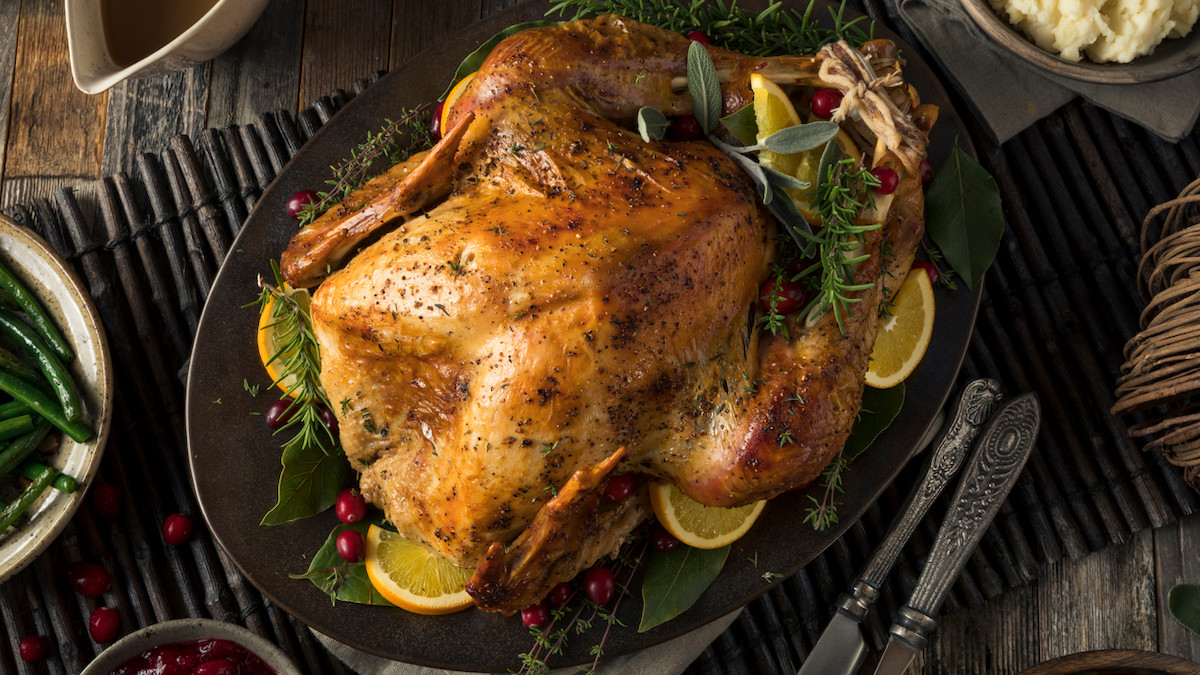
Preparing the perfect Thanksgiving turkey can be an incredibly intimidating task. In a perfect world, we’d all have access to a freshly harvested wild turkey. But for many folks, that simply is not an option. This means that most of us will once again be left to figure out exactly how to transform a store-bought turkey into something we can be proud of.
A quick online search will lead you to loads of articles and recipes that promise to deliver culinary perfection in the form of crispy skin and juicy meat, but very few of these articles give any advice on what is, frankly, the most important part of the process—choosing the correct bird. This year, we are going to make sure you’re set up for success by walking you through the ins and outs of choosing the perfect turkey.
Bird Size
The first consideration is size. The general recommendation is that you should account for 1½ pounds of turkey per guest. This rule is based on the weight of the raw turkey and assumes you are using a whole bird rather than just the breast. It also assumes that your turkey is the centerpiece protein on the table, which for many folks, it is not.
That said, I am of the opinion that 1 to 1¼ pounds per person is plenty, especially considering all the other items on the table.
Now, before we jump to the next piece, let me share with you my first tip: always use smaller-sized turkeys. It is nearly impossible to cook up one of the 20-pound-plus behemoth turkeys found in the grocery store and have them turn out delicious. Perhaps part of the bird will be tasty, but with something that large, even cookery is just not going to happen.
The problem is that a lot of folks will need at least 20 pounds of bone-in turkey to feed their entire group. While the solution might seem obvious, it’s often never considered. If you need to cook that much meat, buy two smaller birds.
Turkeys in the 12- to 14-pound range will cook much more evenly and quickly than a larger bird. It will also allow you the flexibility of using several different methods of cooking since they’ll fit into nearly any oven or smoker. Simply choosing smaller birds will instantly improve the quality of your Thanksgiving centerpiece.
Turkey Breed
While size is certainly an important consideration, it’s not the only thing we want to be mindful of. Just as important as size, is the breed and raising practices used.
Most modern supermarket turkeys are hybrids developed to reach market weight quickly and to produce a larger proportion of white to dark meat. These birds are often raised in confinement and under less than ethical standards, which is how they are able to be sold inexpensively. Obviously, they come with some serious tradeoffs, both in the flavor department as well as their negative impact on the environment.
My suggestion is to consider purchasing a heritage turkey this year. While the price of these birds is certainly higher, they represent an animal much more closely related to the wild birds roaming North America and as such, have a flavor far superior to the mass-produced birds most of us have grown up seeing each year.
If a heritage bird is out of reach, consider looking for an organic turkey instead. While these are often the same Broad Breasted White breed as commodity birds, they are raised using more sustainable practices and in a slower-growing environment which significantly impacts their size and flavor in a beneficial way.
Fresh or Frozen
The final consideration would be fresh versus frozen. When I was a younger chef, I simply could not abide by the idea of using a frozen bird for Thanksgiving. Somehow this cheapened the experience for me, and I refused to even consider doing it.
Then one year, I needed to cook five turkeys in order to feed my group, but only had access to two fresh birds. That meant cooking three previously frozen birds, which I was sure would ruin the meal for everyone. As it turned out, it was impossible to tell the difference when they were cooked.
A frozen bird can be just as delicious as a fresh one, assuming that you have allowed for an appropriate amount of time to thaw it in the fridge. It’s smart to assume that it will take two full days for a turkey to thaw completely, so accounting for this extra time is crucial.
Once thawed, it can be used in exactly the same manner you would fresh. Another major benefit of buying a frozen turkey is that they are often less expensive and open you up to the possibility of buying from a smaller farmer who might not have the infrastructure to slaughter birds only once a year, just in time for the holidays.
One thing to be on the lookout for, especially with frozen birds, is excess moisture. Many turkeys sold frozen have been injected with a saline solution to increase their volume. While this might seem like no big deal, it means that bird will shrink to a fraction of its precooked size and become dry and flavorless in the process. In other words, avoid this kind of turkey at all costs.
Plan Ahead
My last piece of advice for you is to not wait till the last minute to purchase your turkey. Many of the best producers sell out of birds in the weeks leading up to Thanksgiving, so placing your order in advance will save you a lot of heartache. The difference between success and failure on Thanksgiving Day often comes down to planning.
Hopefully, this has helped demystify the process of choosing the correct turkey. Good luck and happy holidays!





Conversation